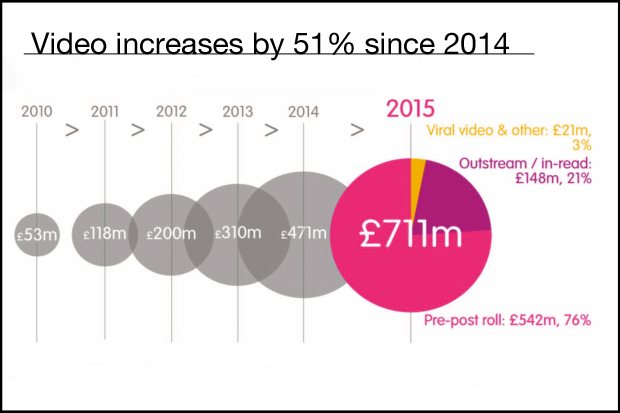
As the problems of display advertising around text continue to grow, many media companies have been looking at online video as a way of driving revenues. Some are developing large, structured video teams, while others are merely dipping their toes in the water with a more experimental approach.
Latest UK Internet Advertising Bureau (IAB) statistics show that video adverting revenues are growing by 51 per cent a year, now making up almost a quarter of the total spend on display advertising.
However, research from the Reuters Institute for the Study of Journalism (RISJ) suggest it is not clear news videos will benefit from this to the same extent as general market, due to the "often difficult subject matter, consumer resilience to pre-roll advertising and the dependence of off-site monetisation on Silicon Valley product initiatives".
Speaking at an event hosted by Reuters yesterday (29 June) in London, Antonis Kalogeropoulos, one of the authors of 'The future of online news video', established the three main ways in which publishers are directly or indirectly monetising their news video content.
These approaches emerged as most common amongst 30 news organisations across Europe and North America interviewed for the study about their online video strategies.

Pre and post-roll advertising
Pre and post-roll ads brought in three-quarters (76 per cent) of revenue in 2015, according to IΑΒ UK data on video display advertising, with most coming from new ‘outstream in-read' formats that play video, for example between paragraphs of text.
"However, the audience has a large dissatisfaction with this, and some publishers like Quartz and others like Trinity Mirror have polarising attitudes towards it," said Kalogeropoulos.
Indeed, Xana Antunes, editor for new initiatives at Quartz, is quoted in the report describing pre-roll as "one of the crummiest inovations of digital video", while Alison Gow, digital innovation editor at Trinity Mirror, believes that while recognising the damage of adverts, from an advertising perspective there isn't anything as compelling as pre-rolls, plus "the consumer is fairly familiar with them."
The report states that these differing attitudes are evidence of the varying online news video strategies – for example, Quartz focuses on sponsored content, whereas other publishers focus "less about the form and more about the practical application".
Kalogeropoulos noted that publishers must take into consideration off-site consumption, as platforms such as Facebook will inevitably develop new ways to attract advertising revenue, noting that YouTube didn't originally have a monetisation strategy.
Branded or sponsored content
The report explains that digital companies such as Vice and Quartz have been gaining revenue through branded and sponsored content. BuzzFeed also relies heavily on native advertising, with 35 per cent of its revenues coming from video.
The Economist embraces sponsored content too. The editorial teams come up with ideas for videos they want to make themselves, which are then pitched to sponsors via the sales team. Elsewhere, NowThis prefers the branded route, getting videos created by a team that sits separately from their editorial staff.
"The problem of relying on branded videos is down to scaling, because unique branded videos cannot be automated in the way that banner ads can be," said Kalogeropoulos.
The study also raises the concern that producing branded or sponsored content demands a huge amount of investment from news organisations, and could "put publishers in direct competition with advertisers".
Marketing and referrals
In all the interviews undertaken, the most widely cited reason for publishers to invest in online news video, especially off-site, is to engage people with their brand.
Kalogeropoulos said that at this stage, many publishers will just be using social media to drive traffic to their content as opposed to earning money directly from it. The BBC is one such example, producing explainer content like short news videos to reach younger audiences.
"Most online news video consumption happens off-site and while native Facebook video doesn't necessarily bring referrals back to the main site, it can bring attention and brand awareness with more engagement such as comments or likes," Kalogeropoulos added.
Free daily newsletter
If you like our news and feature articles, you can sign up to receive our free daily (Mon-Fri) email newsletter (mobile friendly).
Related articles
- 15 free sources of data on the media industry
- Journalism trends and predictions for 2024, with Nic Newman
- Most news leaders think generative AI benefits newsrooms, RISJ finds
- Standing out in a crowded market: what makes a top news podcast?
- News subscriptions hit a snag amid cost-of-living crisis, RISJ report finds









